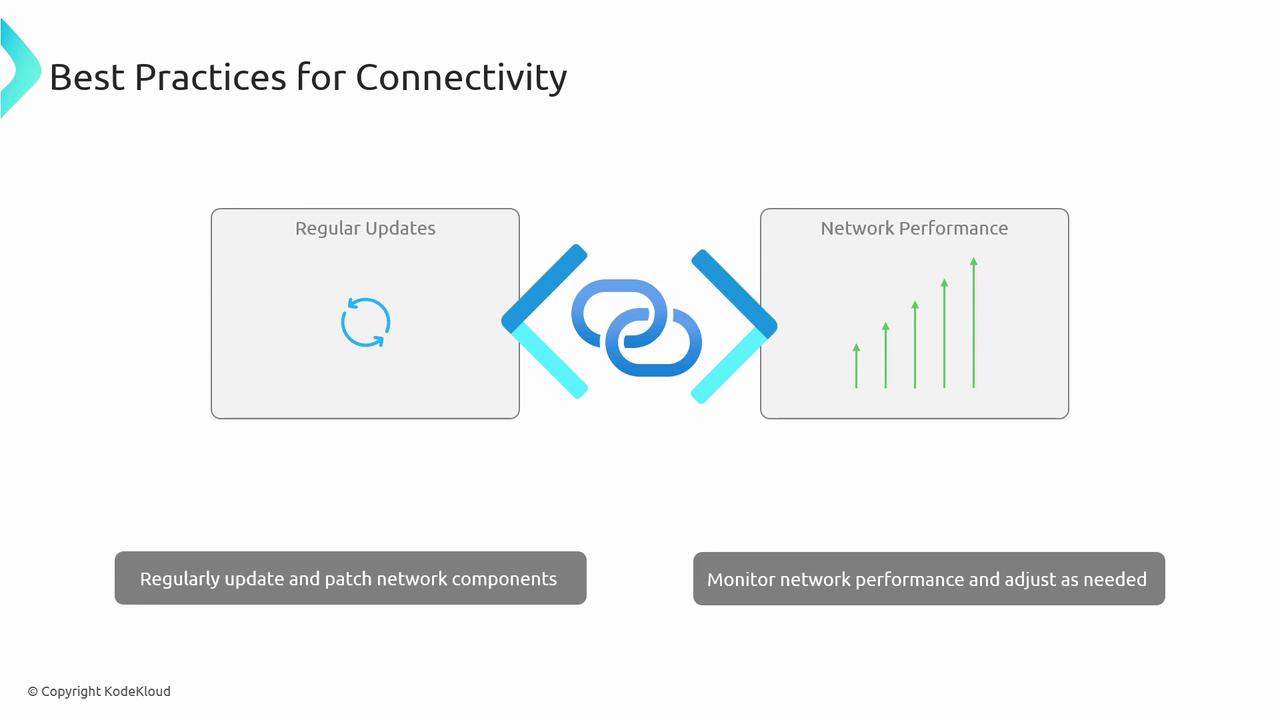AZ-400: Designing and Implementing Microsoft DevOps Solutions
Design and Implement Pipelines
Connectivity
In this article, you’ll learn how to architect secure, reliable connectivity for CI/CD pipelines using Azure DevOps. Proper network design ensures that agents communicate seamlessly with code repositories, build services, and deployment targets without compromising security.
Why Connectivity Matters
Connectivity is the backbone of any DevOps workflow. When pipelines cannot reach external package feeds or self-hosted agents lack network access, builds fail and deployments stall. By designing a resilient network topology, you guarantee:
- Secure access to source code and artifacts
- Efficient data transfer between pipeline stages
- Compliance with organizational security policies
Azure Pipelines Network Components
The following table summarizes the key elements involved in Azure DevOps connectivity:
| Component | Purpose | Example or Link |
|---|---|---|
| Internet | Provides access to public endpoints and third-party services | Download NuGet packages, Docker images |
| Virtual Network (VNet) | Isolates pipeline resources in a private Azure network | Azure VNets |
| Network Security Groups (NSGs) | Enforce inbound/outbound traffic rules at subnet and NIC levels | Allow HTTPS (443) to Azure Artifacts |
| Agent Pools | Execute build and deployment jobs on Microsoft-hosted or self-hosted machines | Self-hosted agents in a VNet require NSG and routing configuration |
| Inbound/Outbound Port Rules | Define which ports and protocols can enter or leave your VNet | Allow outbound 443, 80 for dependency retrieval |
Advanced Connectivity Features
Azure provides private and service endpoints to enhance security by avoiding the public internet:
Private Endpoints
Connect directly to Azure services like Azure Storage over the Azure backbone.Service Endpoints
Extend your VNet identity to PaaS resources such as Azure Key Vault and Azure Container Registry, ensuring traffic stays within Azure’s network.
Troubleshooting Connectivity Issues
Even the best network designs encounter issues. Start with these steps:
- Verify NSG rules and route tables for correct port ranges and address prefixes.
- Check DNS resolution and outbound connectivity from self-hosted agents.
- Use Azure Monitor and Network Watcher to review logs for dropped packets or denied traffic.
Note
Enable NSG Flow Logs in Azure Monitor to capture detailed traffic information and speed up root cause analysis.
Best Practices for Secure Connectivity
- Define least-privilege NSG rules and avoid overly permissive configurations.
- Keep self-hosted agent VM images and NSG rule sets up to date with security patches.
- Continuously monitor network performance metrics and security alerts.
Warning
Overly broad port rules increase attack surface. Always restrict access to specific IP ranges and protocols.

Conclusion
Robust network connectivity is critical for seamless CI/CD operations in Azure DevOps. By correctly configuring VNets, NSGs, agent pools, and leveraging private or service endpoints, you’ll ensure your pipelines remain secure, reliable, and performant.

Further Reading
Watch Video
Watch video content